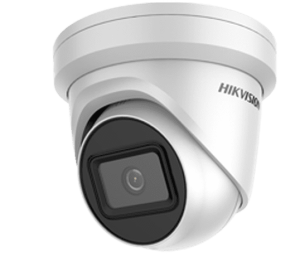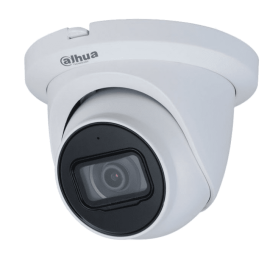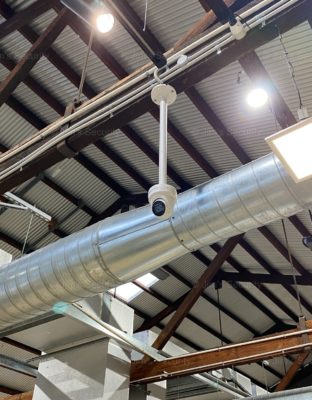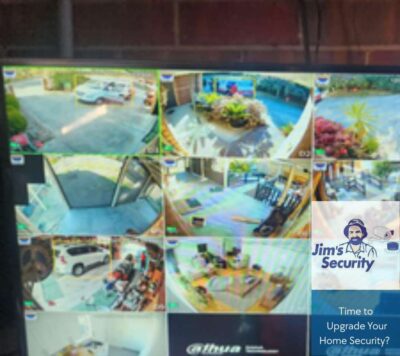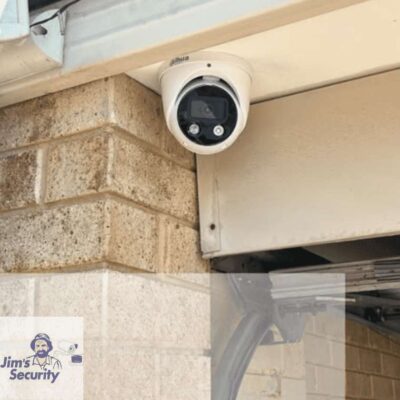Over the years the names Hikvision and Dahua have become synonymous with CCTV.
While Hikvision owns the largest global proportion of market share in the security industry. Dahua comes in second place, landing itself ahead of other big players such as Uniview, Hanwha and Axis.
Both brands are known to produce products that offer a bang for your buck and in many cases have similar features and aesthetics. Similarities which often leave our customers wondering, is Hikvision better than Dahua?
A quick answer to this common question is that Dahua generally manufactures slightly more affordable products that are more suitable for domestic installation. While, Hikvision tends to produce more premium products, that are often better for commercial installation.
However, figuring out whether Hikvision or Dahua produces a better product for your installation scenario also involves understanding the subtle differences between similar camera sets produced by each brand.
To help guide you on how to compare specific products across different CCTV brands, in this article we will compare Hikvision’s 6MP Acusense Fixed Turret Network Camera with Dahua’s 6MP Fixed Focal Eyeball WizSense Network Camera across several relevant dimensions.
If you require further assistance or would simply like some professional advice, don’t hesitate to reach out to us by requesting a book a quote online
Sensor Size and Low Light Ability
Dahua’s Wizsense has a 1/2.7″ Progressive Scan CMOS sensor, while Hikvision’s Acusense has a 1/2.4″ Progressive Scan CMOS sensor. However, for the majority of their products both brands typically use 1/3″Progressive Scan CMOS sensors.
The sensor size not only determines resolution, but also the cameras’ low light ability. Therefore, the minimum illumination for Dahua’s Wizense (0.005 Lux) is higher than that of Hikvision’s Acusense (0.003 Lux). Dahua’s Wizsense IR range (50m) is also longer than that of Hik’s Acusense (30m), meaning that Wizsense cameras are able to capture details of objects further away in a scene, compared to Acusense Cameras, when recording during night time.
Integration
Dahua and Hikvision provide customers with the ability to integrate with other home security measures to create a ‘connected home’ security solution.
However, at the time of writing this blog, Hikvision’s ‘Hik-Connect’ platform is the superior option for those looking to integrate their security measures. Hikvision surveillance cameras can be connected with the Hikvision AX Pro Alarm and Hikvision Intercom systems – with the entire range able to be conveniently controlled and managed remotely through the Hik-Connect app platform.
Bitrate
Bitrate is the amount of processing power required to record and watch a video. Similar to the way in which the quality of images is determined by resolution, bitrate indicates video quality.
The bit rate of Hikvision’s Darkfighter is 32Kbps ~ 16Mbps, while Dahua’s Wizsense offers both H.265 and H.264 video format and therefore supports bit rates of 32Kbps and 19 Kbps.
Protocol
To date, the majority of Hikvision and Dahua CCTV cameras support ONVIF and RTSP protocol.
ONVIF is a global standard for how IP products communicate with each other. This ensures that cameras are compatible with third party equipment. On the other hand, RTSP allows software and other equipment to access the camera’s video stream.
However recently both Hikvision and Dahua Technology have been suspended from ONVIF. Without access to ONVIF specifications, new devices and firmware may no longer conform to this industry standard.
Analytics
Both cameras offer standard motion detection features as well as line crossing/trip wire and intrusion detection.
Dahua is well known for their Smart Motion Detection technology (SMD) which aims to eliminate false alarms by using advanced algorithms to differentiate between the shape of humans and vehicles within a scene – only triggering an alarm and sending notifications when a person or vehicle is detected.
Hikvision also offers false alarm reduction through human and vehicle target classification. These cameras not only detect and distinguish human beings and vehicles from other objects but also recognise vehicle number plates.
Case Studies
More generally, here are a few examples of Hikvision and Dahua installations completed by Jim’s Security.
As you have seen above, these two products have relatively similar features. This tends to be the case across the majority of cameras produced by Dahua and Hikvision.
So which is the better camera and brand? – The answer depends on where and how you intend to use your security camera.
When comparing the two brands on the whole, as previously mentioned, Dahua generally manufactures slightly more affordable products that are more suitable for domestic installation. While, Hikvision tends to produce more premium products, that are often better for commercial installation. Hikvision also provides more comprehensive integration capabilities through the Hik-Connect app platform.
However, as demonstrated by the case studies, when deciding what camera system is best for you, it is most important to take into account the specific requirements that each brand offers in relation to the type of camera you are interested in. Overall, whether Hikvision or Dahua is a better brand will depend on what features you value over others, your budget and your unique installation scenario.
Here at Jim’s Security we offer a wide range CCTV packages. To find out more don’t hesitate to give us a call on 131 546, or book a free no obligation quote online.
